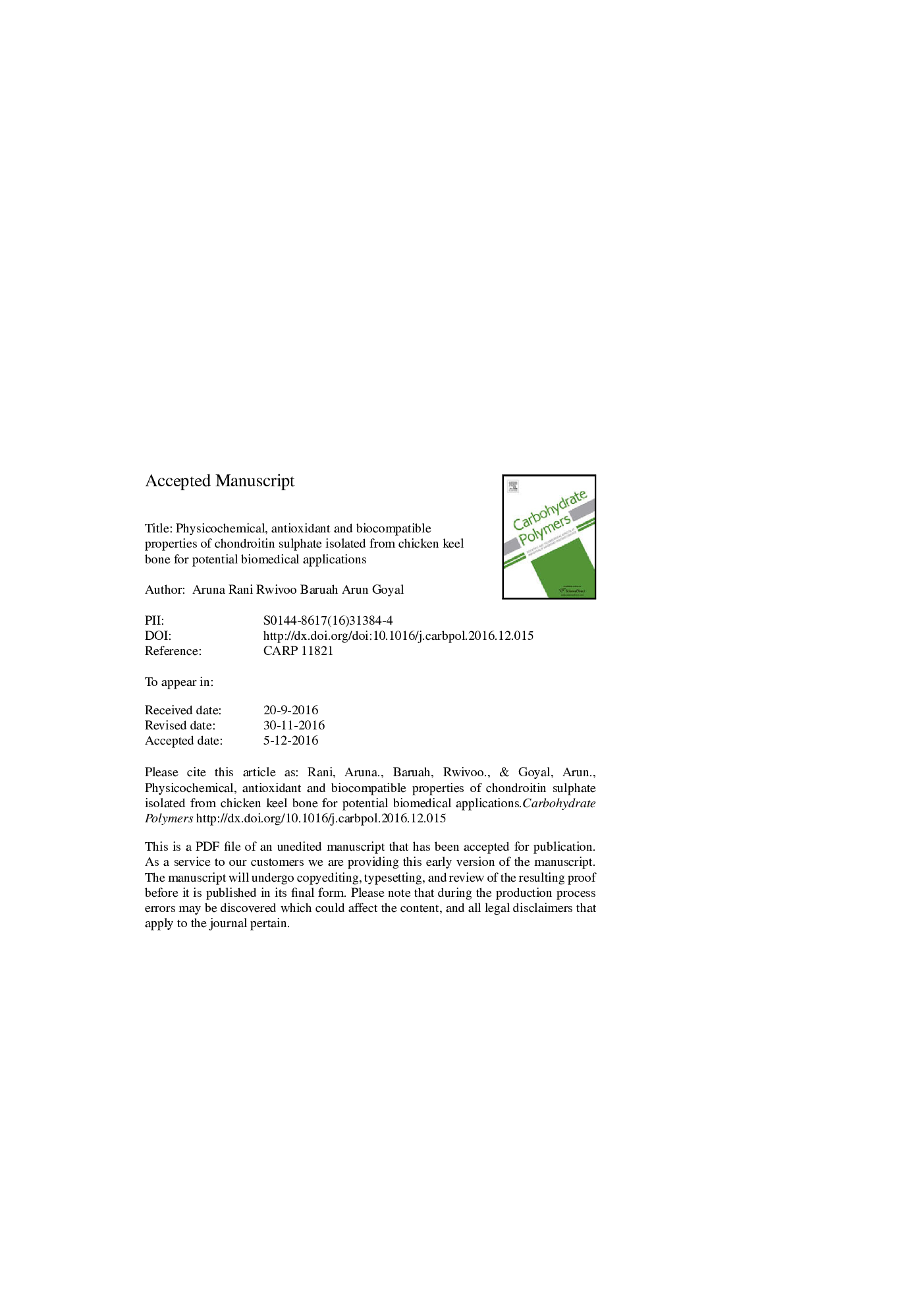| Article ID | Journal | Published Year | Pages | File Type |
|---|---|---|---|---|
| 5157762 | Carbohydrate Polymers | 2017 | 29 Pages |
Abstract
Chicken keel bone cartilage was explored for cheaper and sustainable source for isolation of chondroitin sulphate (CS) for its future use in tissue engineering and pharmaceutical industry. HPSEC analysis displayed two peaks of 100 kDa for CS-keel polysaccharide and 1 kDa for protein. DLS analysis of CS-keel displayed polydispersity. CS-keel yield was 15% and 53 ± 5% uronic acid content. The quantified percentages of UA-GalNAc4S and UA-GalNAc6S disaccharide in CS-keel were 58% and 42%, respectively. FT-IR identified CS-keel to be chondroitin 4-sulphate. 1H NMR of CS-keel confirmed the presence of N-acetylgalactosamine and Glucuronic acid. FESEM demonstrated layer structure and AFM displayed the size of CS-keel fibres. DSC, TGA and DTG studies of CS-keel showed Td at 243 °C. In vitro cell proliferation assay and morphological analysis of mouse fibroblast L929 cell lines confirmed the biocompatibility of CS-keel. CS-keel (5 mg/ml) exhibited â¼49% antioxidant activity against DPPH and 22% against superoxide radical protecting from oxidative damage. CS-keel demonstrated better (70.3%) emulsifying activity than commercial sodium alginate (60.2%).
Keywords
Related Topics
Physical Sciences and Engineering
Chemistry
Organic Chemistry
Authors
Aruna Rani, Rwivoo Baruah, Arun Goyal,
